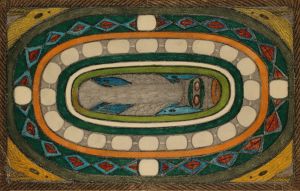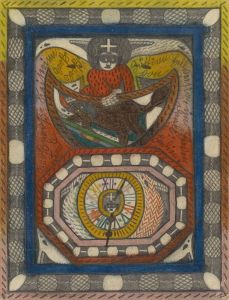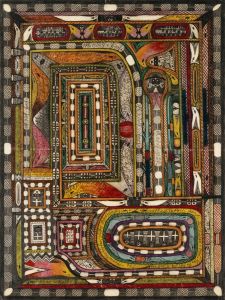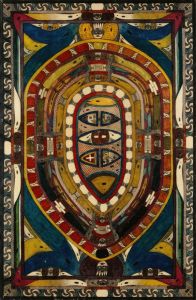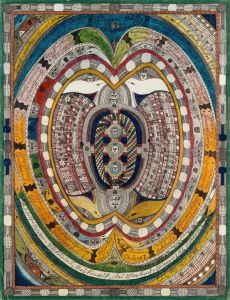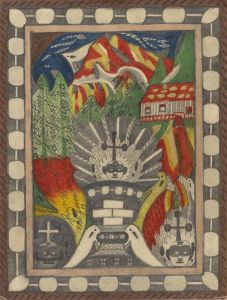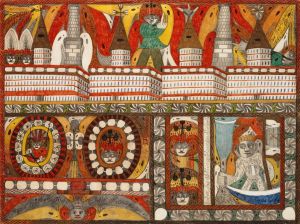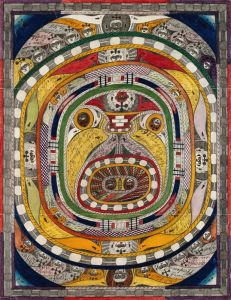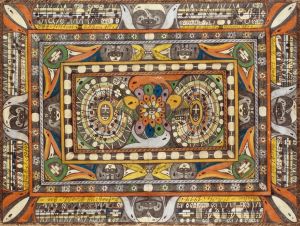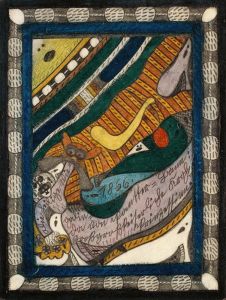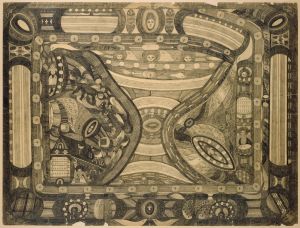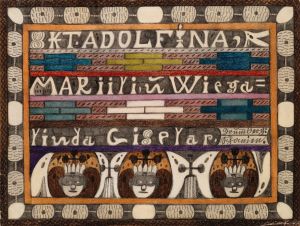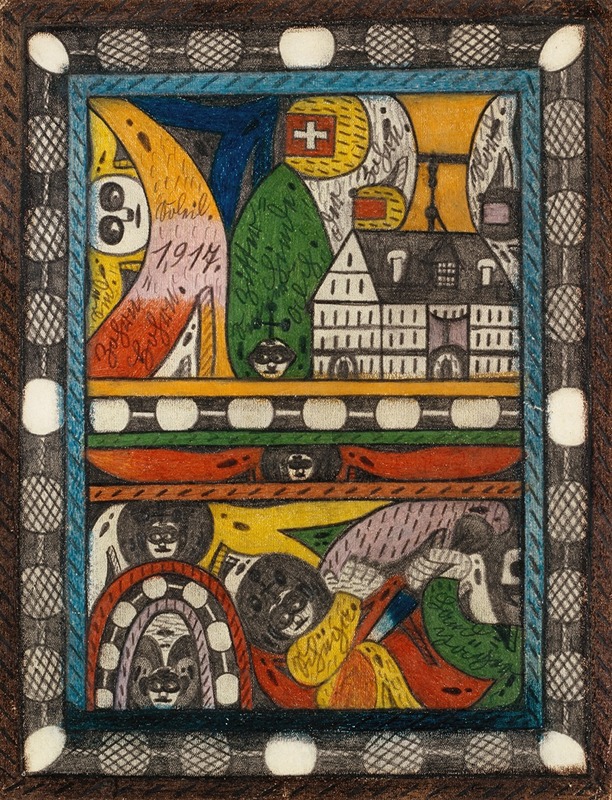
Der Zohrn, Schiiga und Land=Jäger
A hand-painted replica of Adolf Wölfli’s masterpiece Der Zohrn, Schiiga und Land=Jäger, meticulously crafted by professional artists to capture the true essence of the original. Each piece is created with museum-quality canvas and rare mineral pigments, carefully painted by experienced artists with delicate brushstrokes and rich, layered colors to perfectly recreate the texture of the original artwork. Unlike machine-printed reproductions, this hand-painted version brings the painting to life, infused with the artist’s emotions and skill in every stroke. Whether for personal collection or home decoration, it instantly elevates the artistic atmosphere of any space.
Adolf Wölfli (1864-1930) was a Swiss artist known for his intricate and highly detailed works, which he created while institutionalized for schizophrenia. One of his notable pieces is "Der Zohrn, Schiiga und Land=Jäger," which translates to "The Anger, the Schiiga, and the Country Hunter." This artwork is part of Wölfli's larger body of work, which he produced during his time at the Waldau Clinic in Bern, Switzerland.
Wölfli's art is characterized by its complex patterns, dense compositions, and the integration of text and musical notation. His works often depict fantastical landscapes, intricate geometric designs, and a unique blend of imagery and narrative. "Der Zohrn, Schiiga und Land=Jäger" exemplifies these characteristics, showcasing Wölfli's ability to create a visual language that is both personal and universal.
The piece is a part of Wölfli's epic narrative, which he called "St. Adolf-Giant-Creation." This narrative spans thousands of pages and includes drawings, musical compositions, and autobiographical elements. Wölfli's work is often seen as a way for him to cope with his mental illness, providing him with a sense of structure and purpose.
"Der Zohrn, Schiiga und Land=Jäger" features a combination of abstract and figurative elements, with intricate patterns and symbols that are typical of Wölfli's style. The use of vibrant colors and detailed line work creates a sense of movement and energy within the composition. The inclusion of text and musical notation adds another layer of meaning to the piece, inviting viewers to engage with it on multiple levels.
Wölfli's art gained recognition posthumously, thanks in large part to the efforts of psychiatrist Walter Morgenthaler, who published a monograph on Wölfli's work in 1921 titled "Ein Geisteskranker als Künstler" ("A Psychiatric Patient as Artist"). This publication brought Wölfli's work to the attention of the art world and helped establish him as a significant figure in the field of outsider art.
Today, Wölfli's works are held in high regard and are included in the collections of major museums, such as the Museum of Modern Art in New York and the Collection de l'Art Brut in Lausanne, Switzerland. "Der Zohrn, Schiiga und Land=Jäger" is a testament to Wölfli's unique vision and his ability to transform his inner experiences into compelling and intricate works of art.
Wölfli's legacy continues to influence contemporary artists and scholars, who are drawn to his innovative approach to art-making and his ability to create a cohesive and expansive body of work despite the challenges he faced. His art serves as a powerful reminder of the potential for creativity and expression to emerge from even the most difficult circumstances.





